How Derived: Past Life Memories in Childhood
 Researched by: Godwin Samarante, Ian Stevenson, MD and Trutz Hardo
Researched by: Godwin Samarante, Ian Stevenson, MD and Trutz Hardo
From: Reincarnation and Biology (pages 1940-1970), by Ian Stevenson, MD and Children Who Have Lived Before (pages 87-106), by Trutz Hardo
Article by Walter Semkiw, MD
The Early Lives of Johnny, Robert and Gnananadasa
A.K. Nandadasa Johnny was born in 1945 in Unawatuna, a coastal town in the district of Galle, at the southern tip of Sri Lanka. Unawatuna Beach is pictured above and to the right. He was known by all as “Johnny.” His father was Pedric Appuhamy and mother Sisel Hamy. Johnny had a brother named Gnananadasa, who was three years younger than Johnny.
 In 1946, Akmeemana Palliyagurunge Robert, who went by the name “Robert,” was born in the same town. His parents were A. Dharmasena and Mary Nona. Robert did not have a good relationship with his father, but he was very close to his mother.
In 1946, Akmeemana Palliyagurunge Robert, who went by the name “Robert,” was born in the same town. His parents were A. Dharmasena and Mary Nona. Robert did not have a good relationship with his father, but he was very close to his mother.
Johnny and Robert became best friends in childhood. They played cards, excelled at swimming and diving in the sea, as well as climbing trees. They were both born to poor families. Johnny and Robert were Buddhists and they worshipped at the temple at Yatigala. Robert was the more devout of the two.
Johnny obtained work in a factory in the city of Galle that made frames for eyeglasses. Johnny acquired a primitive house in the jungle on Romassala Hill, not far from a cliff overlooking the sea. Robert left school while in the ninth grade and he took temporary jobs as a mason and laborer. He later worked in a battery factory.
Johnny’s Friend Amarapala
At the spectacle frame factory, Johnny befriended a man named Amarapala Hettiaratchi. Both Johnny and Robert traveled to the village of Pitadeniya, 14 kilometers north of Galle, to attend the wedding of Amarapala and his wife, Yasawathie, which occurred on October 20, 1966. The couple lived in Pitadeniya, though Amarapala worked at the factory in the city of Galle.
The Rebellion of 1971
 Due to the divide between the wealthy and the poor, a movement towards rebellion brewed in Sri Lanka. In the District of Galle, Johnny, a gifted speaker, became a rebel leader, with Robert his second in command. Due to its’ remoteness, Romassala Hill became a rebel training ground. Food and supplies were stockpiled in Johnny’s house.
Due to the divide between the wealthy and the poor, a movement towards rebellion brewed in Sri Lanka. In the District of Galle, Johnny, a gifted speaker, became a rebel leader, with Robert his second in command. Due to its’ remoteness, Romassala Hill became a rebel training ground. Food and supplies were stockpiled in Johnny’s house.
Robert was in charge of acquiring weapons. From his experience in the battery factory, Robert learned how to make homemade bombs. Their bombs were tested at the beach of Utawatuna. The rebellion was launched on April 5, 1971. Rebels raided police stations at night, when officers were asleep, to neutralize the police and to seize weapons.
Woman with a Radio in Yaddehimulla
A woman Johnny and Robert knew, who lived in Yaddehimulla, was one of the few people in the area who owned a radio. Only at nighttime, when they would not be seen, Johnny and Robert would visit this woman to listen to news of the rebellion on the radio.
Police and the Sri Lankan Army moved to quell the revolt. It is estimated that 1200 people lost their lives in the fighting.
The Capture of Johnny and Robert
In the District of Galle, police and the army surrounded Romassala Hill. Johnny and Robert escaped capture by hiding in caves and crevices between rock formations. Two weeks later, in mid-April 1971, the pair tried to leave Galle, but police captured them at the bus station.
Robert’s Attempt at Escape and Death
 In jail, Robert formed a plan. He told police that he would lead them to a stash of weapons and bombs hidden on Romassala Hill. On April 19, 1971 at about 10 in the morning, handcuffed, Robert led a group of officers to a place on the hill that had a cliff overlooking the sea. Kicking one policeman and head butting another, Robert attempted to dive into the sea. Gunshots rang out. Robert suffered a bullet wound to the right side of his abdomen just below his rib cage and fell dead into the water.
In jail, Robert formed a plan. He told police that he would lead them to a stash of weapons and bombs hidden on Romassala Hill. On April 19, 1971 at about 10 in the morning, handcuffed, Robert led a group of officers to a place on the hill that had a cliff overlooking the sea. Kicking one policeman and head butting another, Robert attempted to dive into the sea. Gunshots rang out. Robert suffered a bullet wound to the right side of his abdomen just below his rib cage and fell dead into the water.
Johnny is Hung Upside Down, Beaten to Death and his Body Set on Fire
Police officers, enraged at Robert’s ruse, returned to the police station where they beat Johnny to death. At one point, the police hung Johnny by his feet upside down. He died of the beating by 1 PM on April 19, 1971. A few days later, gasoline was poured on Johnny’s body, which was set on fire, then buried.
Gender Change: The Rebels Reincarnate as Twin Girls to their Friends Amarapala & Yasawathie
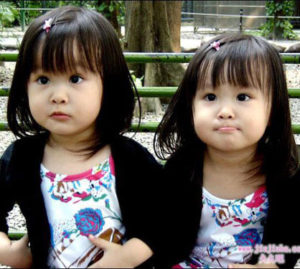 A little over 7 years later, on November 3, 1978 in the village of Pitadeniya, Amarapala, Johnny’s friend from the factory, and his wife, Yasawathie, celebrated the birth of fraternal twin girls who were named Sivanthie and Sheromie. Sivanthie was born with a birthmark measuring 2 cm by 1 cm on the right side of her abdomen, just below her ribcage, corresponding to Robert’s gunshot wound. No one else in the family had such a birthmark.
A little over 7 years later, on November 3, 1978 in the village of Pitadeniya, Amarapala, Johnny’s friend from the factory, and his wife, Yasawathie, celebrated the birth of fraternal twin girls who were named Sivanthie and Sheromie. Sivanthie was born with a birthmark measuring 2 cm by 1 cm on the right side of her abdomen, just below her ribcage, corresponding to Robert’s gunshot wound. No one else in the family had such a birthmark.
Sivanthie remembers her Past Life Death as Robert Jumping into the Sea
When Sivanthie started talking at 2 ½ years of age, she said that she had another home where she had a father, mother and sister. She described how she had to hide in a cave with “Johnia.” (1) Sivanthie said that she and Johnia had been arrested and that their hands were handcuffed behind them. Sivanthie would place her little hands behind her back to demonstrate being handcuffed.
She said she had been shot while trying to escape by leaping into the sea.  When describing this incident, Sivanthie pointed to the birthmark on the right side of her abdomen, which corresponded to the location of Robert’s gunshot wound.
When describing this incident, Sivanthie pointed to the birthmark on the right side of her abdomen, which corresponded to the location of Robert’s gunshot wound.
Sivanthie recalls the Names of her Past Life Parents
Sivanthie said that her mother was Mary Akka. “Akka” means older sister. Recall that Robert’s mothers’ name was Mary Nona. Ian Stevenson posited that Mary Akka was a nickname of Mary Nona. Sivanthie asked to be taken back to her home.
Sivanthie remembers Past Life Colleagues of the Rebellion
Sivanthie said that in her past life, she knew a man named “Kurune Uncle.” (2) Mary Nona later confirmed that one of Robert’s collaborators in the insurgency was indeed called Kurune Uncle.
 Sivanthie told her mother, Yasawathie, that they would hide in caves in the dark. She also said that “Sudu Nangi” had once sent her cloths in a bucket. (3) In fact, Robert had known someone who he called Sudu Nangi. When he was in hiding, this woman allowed Robert to bath and wash his clothes utilizing her well. Robert would leave his clothes to dry and Sudu Nangi would later take or send the dried clothes to Robert. Once she did indeed send Robert’s dried clothes in a bucket. Sivanthie also stated that Sudu Nangi saw her, as Robert, being taken away by the police. In fact, Sudu Nangi had witnessed Robert, handcuffed, being led by police after his arrest.
Sivanthie told her mother, Yasawathie, that they would hide in caves in the dark. She also said that “Sudu Nangi” had once sent her cloths in a bucket. (3) In fact, Robert had known someone who he called Sudu Nangi. When he was in hiding, this woman allowed Robert to bath and wash his clothes utilizing her well. Robert would leave his clothes to dry and Sudu Nangi would later take or send the dried clothes to Robert. Once she did indeed send Robert’s dried clothes in a bucket. Sivanthie also stated that Sudu Nangi saw her, as Robert, being taken away by the police. In fact, Sudu Nangi had witnessed Robert, handcuffed, being led by police after his arrest.
At the Temple in Yatigala, Sivanthie remembers her Past Life Name was Robert
Sivanthie would talk about a temple called Yatigala that she would go to. Recall that Robert was a devout Buddhist. When the twins were 3 1/2 years old, their mother took them to the temple at Yatigala, where Sivanthie noticed that it had been rebuilt. Indeed, a new wing had been added to the structure. At the temple, for the first time, she stated that her name used to be Robert. This occurred in May or June 1982.
Amarapala Realizes Sivanthe was his Past Life Friend Robert
Amarapala and Yasawathie, the twins’ parents, now realized that Sivanthie was recalling the life of their friend Robert, who had attended their wedding. Word of Sivanthie remembering a past life as the rebel Robert spread through the community in Pitadeniya. A schoolboy studying in Pitadeniya wrote to his family in Unawatuna, where Robert had lived, of these past life memories. In this way, Robert’s family learned of Sivanthie’s statements.
Sheromie identifies Gnananadasa, her Past Life Brother
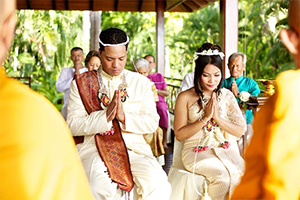 On July 17, 1982, several members of Robert’s family and friends visited the twins, who were now 4 years old. One of the first to visit was Johnny’s younger brother and Robert’s friend, Gnananadasa. Upon seeing the visitor, Sheromie said, “my younger brother has come.” (4) This was Sheromie’s first statement about a past life. She then ran up to Gnananadasa and hugged him. Gnananadasa wept at this reunion and promised to return. Sheromie also made the statement that her past life name was Johnny.
On July 17, 1982, several members of Robert’s family and friends visited the twins, who were now 4 years old. One of the first to visit was Johnny’s younger brother and Robert’s friend, Gnananadasa. Upon seeing the visitor, Sheromie said, “my younger brother has come.” (4) This was Sheromie’s first statement about a past life. She then ran up to Gnananadasa and hugged him. Gnananadasa wept at this reunion and promised to return. Sheromie also made the statement that her past life name was Johnny.
Sheromie identifies her Past Life Mother and Sister
The next day, on July 18, 1982, Gnananadasa returned with his and Johnny’s mother and sister. When they entered the house, Sheromie, in seeing Johnny’s mother, Sisel Hamy, exclaimed, “this is my mother.” Sheromie also called her “Ama,” which means mother. She then said, referring to Johnny’s younger sister, “this is my Nangi.” “Nangi” means younger sister in Sri Lankan. (5)
Sheromie expressed much affection for her past life mother, Sisel Hamy, while she was cool to Johnny’s father. This reflected Johnny’s relationship with his father, as the father and son did not get along well. When Johnny’s mother and sister got ready to go home, Sheromie repeatedly said, “Take me with you!” Sheromie weeped as they left. (6)
Sheromie stated that they were traveling together when they were arrested. One witness said that when Johnny and Robert were arrested, one of them was already in the bus, while the other was still outside the bus. Sheromie also said they were caught together.
Past Life Memories: Sheromie Remembers Hanging Upside Down, her Death and from the Spirit Realm Observes Johnny’s Body being Burned
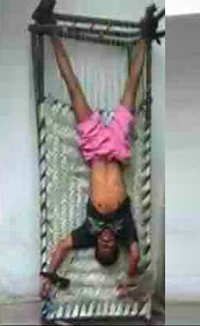 Two days later, when Gnananadasa asked Sheromie for details of her past life, she described how she was tortured and hung upside down. Sheromie said she remembered seeing an upside down picture of the Buddha while hanging by her feet from the ceiling. Sheromie was on the verge of tears in describing these past life events.
Two days later, when Gnananadasa asked Sheromie for details of her past life, she described how she was tortured and hung upside down. Sheromie said she remembered seeing an upside down picture of the Buddha while hanging by her feet from the ceiling. Sheromie was on the verge of tears in describing these past life events.
Significantly, Sheromie also remembered that something was poured on her body and that her body was burned. Recall that the burning of Johnny’s body occurred several days after his death. As such, the soul of Johnny | Sheromie was able to observe the burning of Johnny’s body from the perspective of a spirit being, as Johnny was already dead when his body was set on fire. This is reminiscent of how in the case of Ahmet Delibalta | Erkan Kilic, Erkan remembered how the body of Ahmet was misidentified, even though Ahmet was already dead.
Sheromie now recalled that she had been Johnny in a prior lifetime and she recognized her twin sister as her past life friend, Robert. After this point the twins frequently talked about the past lives they had together.
For example, Sheromie said to her twin, “Your hands were also tied.” Sivenathie replied, “Your hands were also tied. Can you remember our bus ride together?” (7)
On Romassala Hill, the Twins Locate Past Life Locations
Godwin Samararatne, a research scientist, heard about the twins’ past life memories through a newspaper report and decided to investigate the cases. He visited the twins at the end of June 1982. Ian Stevenson interviewed the twins and families involved in the cases in October 1982, with Godwin serving as an interpreter.
 On July 4, 1982, when the twins were about 4 years old, Godwin took the twins to Romassala Hill. At the point where the road for vehicles ended, the twins were deposited on a footpath and asked to show the way to the homes of their previous lives. The twins made their way up the twisting and rocky path. Sivanthie led the group to the spot on the cliff where she, as Robert, tried to escape by diving into the sea and was shot. When Ian Stevenson traversed this route, he was amazed that Sivanthie could find her way to the cliff, as there were so many rocks that in places, Stevenson could not even discern that a path existed.
On July 4, 1982, when the twins were about 4 years old, Godwin took the twins to Romassala Hill. At the point where the road for vehicles ended, the twins were deposited on a footpath and asked to show the way to the homes of their previous lives. The twins made their way up the twisting and rocky path. Sivanthie led the group to the spot on the cliff where she, as Robert, tried to escape by diving into the sea and was shot. When Ian Stevenson traversed this route, he was amazed that Sivanthie could find her way to the cliff, as there were so many rocks that in places, Stevenson could not even discern that a path existed.
At this point, the twins were again asked to find the their past life homes. Sheromie now swung into action and led the group directly to the ruins of Johnny’s house on Romasalla Hill, which were located more than 100 meters away from the cliff where Robert had jumped into the sea. The house had by now largely disintegrated, though the foundation was still present.
These examples of Geographic Memory are similar to how Barbro Karlen, at age 10, found her way to the Anne Frank House without directions, even though she had never been to Amsterdam before.
The Woman with the Radio meets the Twins, Who Comment on their Past Life Nocturnal Visits
 Godwin also took the girls to Yaddehimulla. The woman with the radio in Yaddehimulla heard about Sheromie’s and Sivanthie’s past life memories. When she saw the twins passing by, she said to them, “Aren’t you going to come to listen to the radio?” The twins replied, “We will come in the night.” (8) Recall that Johnny and Robert would only come to listen to the woman’s radio at night, when they would be hidden by darkness. Ian Stevenson was impressed with this statement by the twins.
Godwin also took the girls to Yaddehimulla. The woman with the radio in Yaddehimulla heard about Sheromie’s and Sivanthie’s past life memories. When she saw the twins passing by, she said to them, “Aren’t you going to come to listen to the radio?” The twins replied, “We will come in the night.” (8) Recall that Johnny and Robert would only come to listen to the woman’s radio at night, when they would be hidden by darkness. Ian Stevenson was impressed with this statement by the twins.
Past Life Phobias
The twin girls both had phobias of people wearing khaki colored shirts, which were the kind of shirts worn by police in Sri Lanka. They also became frightened whenever they saw the Jeep with policemen or soldiers in it. This is similar to the phobia that Barbro Karlen had of men in uniforms, including policemen, in the Reincarnation case of Anne Frank | Barbro Karlen.
Past Life Behavior of Making Bombs & Smoking
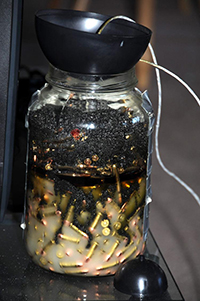 While playing, both girls enjoyed making bombs of clay. When Ian Stevenson asked the twins what was used to make bombs, the twins recited, “nails, paper, tins, wire, broken bottles,” which indeed were used by the rebels in making home-made bombs. (9). Both had a habit of putting sticks in their mouths and pretending to light and smoke them. Johnny and Robert had both been heavy smokers.
While playing, both girls enjoyed making bombs of clay. When Ian Stevenson asked the twins what was used to make bombs, the twins recited, “nails, paper, tins, wire, broken bottles,” which indeed were used by the rebels in making home-made bombs. (9). Both had a habit of putting sticks in their mouths and pretending to light and smoke them. Johnny and Robert had both been heavy smokers.
Twin Girls demonstrate Masculine Behavior
Sivanthie and Sheromie both behaved as if they were still men. For example, they insisted on urinating while standing up. Both liked to wear T-shirts rolled up from the bottom to expose their bellies and part of their chests, as did Johnny and Robert, but was unheard of for girls. Both like to climb trees and ride bikes, which was not done by girls in that era. Both twins said they had beards and they would even stroke their chins pretending that they were stroking their beards, which Johnny and Robert did indeed maintain. They also asked their older brother to prepare cards so they could play a game. Recall that Johnny and Robert often played cards together.
Masculine behavior was observed in the twin girls even up to when they were in their twenties, except that they learned to urinate sitting down, like women do.
Reincarnation, Gender Change, Homosexuality and Transsexuals
 In Ian Stevenson’s 1200 cases in which children’s past life memories were validated, in only 10 percent of cases was a change in gender observed, which is why when a change of gender occurs the reincarnated individual may still identify with the past life gender. This observation can explain why individuals are transsexual or homosexual. A dramatic case in this regard is the male Japanese soldier who reincarnated as a woman but retained a male mindset, including an attraction to women, and became a lesbian.
In Ian Stevenson’s 1200 cases in which children’s past life memories were validated, in only 10 percent of cases was a change in gender observed, which is why when a change of gender occurs the reincarnated individual may still identify with the past life gender. This observation can explain why individuals are transsexual or homosexual. A dramatic case in this regard is the male Japanese soldier who reincarnated as a woman but retained a male mindset, including an attraction to women, and became a lesbian.
Families Involved Accept the Twins’ Past Lives, though Amarapala is Not Pleased his Girls were Rebels
As adults, the twins would visit Gnananadasa, Johnny’s younger brother, in Unawatuna several times a year and in reciprocal manner, he would drive to visit the twins in Pitadeniya. The twins and Gnananadasa would exchange gifts on these occasions.
All three families involved in the case, that is Johnny’s family, Robert’s family and the twins’ parents, accepted these two reincarnation cases based on recognitions made by Sheromie and Sivanthie. The twins’ parents noted that they had never talked of the lives of Johnny and Robert at their home.
In fact, their father, Amarapala, stated that he had “completely forgotten of these deaths [of Johnny and Robert] until the twins started talking [about them].” Keep in mind that over 10 years had passed from the date of the deaths of Johnny and Robert, April 19, 1971, to the point in time when the twins started to talk about their past lives in 1981 and 1982. (10) As such, since their parent had never spoken of the rebels, Sheromie and Sivanthie did not learn about the lives of Johnny and Robert through normal means.
Of note, Amarapala, the twins’ father, was not particularly happy that his daughters had been notorious rebels in their past lives, as Amarapala was not a supporter of the rebellion. Amarapala’s brother held a high position in the community, which led Amarapala’s family to support the rule of law, not insurgency.
Reincarnation and Similar Physical Appearance
Robert was shorter, stockier and had lighter skin than Johnny. Similarly, Sivanthie (Robert) was shorter, stockier and had lighter skin than Sheromie (Johnny). Gnananadasa, Johnny’s younger brother, noted a similarity in facial features between Johnny and Sheromie. (11) (12)
Physical Resemblance in Reincarnation Cases: Sivanthie had the same build as Robert and Sheromie had the same build as Johnny. There was a similarity in Sheromie’s and Johnny’s facial features.
Planning Lifetimes and Same Family Reincarnation: Johnny and Robert were best friends and they reincarnated together as twins. This observation shows how souls can plan lifetimes to be reincarnated together.
Gender Change and Retention of Past Life Gender Traits: Johnny and Robert were males, reincarnated as females, but retained male behavioral traits, including urinating standing up. These types of cases can shed light on why some people become transsexual or homosexual.
Past Life Talent and Behavior: Sheromie and Sivanthie made bombs out of clay and they knew what ingredients Johnny and Robert had used in building home-made bombs. The twin girls rode bikes, climbed trees, rolled up their T-shirts exposing their stomachs and pretended to stroke their beards, behavior typical of men and characteristic of Johnny and Robert.
 Past Life Phobias: The twins were afraid of men in khaki uniforms and of Jeeps. Johnny and Robert were arrested and killed by police and army personnel who wore khaki uniforms and traveled in Jeeps.
Past Life Phobias: The twins were afraid of men in khaki uniforms and of Jeeps. Johnny and Robert were arrested and killed by police and army personnel who wore khaki uniforms and traveled in Jeeps.
Geographic Memory: Sivanthie led a group researching the twins’ cases along a barely discernible path to the spot on the cliff where she, as Robert, tried to escape by diving into the sea and was shot to death. From there, Sheromie led the group to where her house was located during her life as Johnny. In addition, Sivanthie’s past life memory was stimulated by being at a past life location, the temple in Yatigala, where she recalled her name had been Robert. Robert had been a devout Buddhist who worshipped at the Yatigala temple.
Past Life Birthmark: Sivanthie had a birthmark in the same location on the right side of the abdomen just below the ribcage where Robert incurred a gunshot wound. Sivanthie would point to her birthmark when describing how she died while attempting to jump into the sea.
Spirit Beings in Reincarnation Cases: Sheromie knew that Johnny’s body had been burned after his death. Gasoline was poured on Johnny’s body and burned several days after he had died, which means that the soul of Johnny | Sheromie observed this event from the spirit world.
Footnotes
1. Hardo, Trutz, Children Who Have Lived Before, Verlag Die Silberschnur (Germany), 1998, page 90
2. Stevenson, Ian, Reincarnation and Biology, Praeger Publishers, Westport, CT, page 1950
3. Ibid, p. 1951
4. Ibid, p. 1958
5. Ibid, p. 1958
6. Ibid, p. 1956
7. Ibid, p. 1961
8. Ibid, p. 1960
9. Ibid, p. 1962
10. Ibid, p. 1968
11. Ibid p. 1964
12. Hardo, Trutz, Children Who Have Lived Before, p. 99
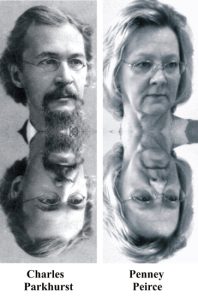



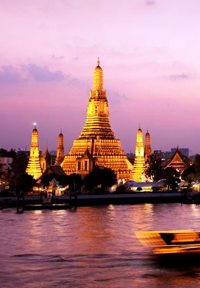
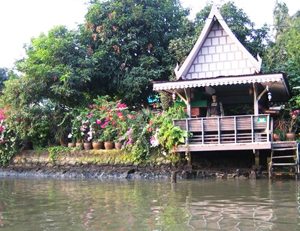
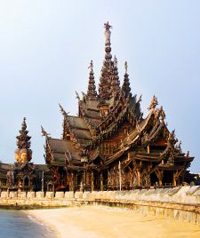


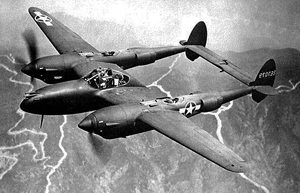
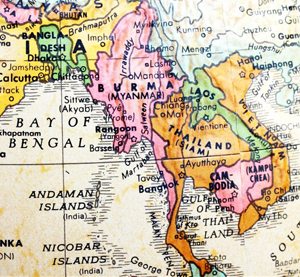 How Derived:
How Derived: 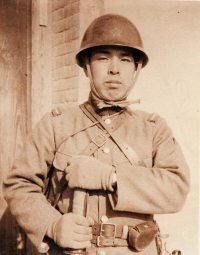 Reincarnation & Planning Lifetimes: Daw has an Announcing Dream involving the Japanese Soldier as a Spirit Being
Reincarnation & Planning Lifetimes: Daw has an Announcing Dream involving the Japanese Soldier as a Spirit Being A Child’s Past Life Memories: Ma says She misses Japan and her Family
A Child’s Past Life Memories: Ma says She misses Japan and her Family The US War Plane that Killed Ma in a Past Lifetime was a P-38 Lightning
The US War Plane that Killed Ma in a Past Lifetime was a P-38 Lightning Other reincarnation cases which demonstrate gender identity issues due to change of sex include:
Other reincarnation cases which demonstrate gender identity issues due to change of sex include:









